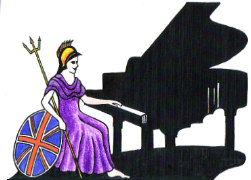Learn to Play the Piano Make Music
Piano Teacher in Hastings, East Sussex by Margaret Whey Harris

UK Piano Page


Margaret is an accomplished classically trained musician. She has been teaching piano for 20 years, and she prides herself on making the piano fun and accessible to her pupils. Margaret also encourages her pupils to have the confidence to play a wide variety of musical genres by ear - as well as teaching you how to read music proficiently.
Margaret's current pupils are aged between 5 - 90 (yes, you're never too late to learn!), and the majority of them achieve distinctions (i.e. the highest grades) in their Associated Board of the Royal Schools of Music Theory, Classical music and Jazz piano exams. Testimonials are available. Margaret also teaches pupils who just want to learn Blues, Latin, Jazz, and Pop music.
Margaret has maintained a private teaching studio since the 1980's, and all ages and skill levels are welcome. She teaches 30 and 60 minute lessons, depending on your requirements.
Piano lessons in Hastings, St Leonards, Rye, Bexhill, Battle areas of East Sussex.
07832 170038
Qualification: L.R.A.M. (Licentiate: Royal Academy of Music)
Hampstead, London
England
Experienced piano teacher and accompanist
Great Harwood, Lancashire
England
I teach piano & violin from my own home in Great
Music Festival for performers and guests Our 10th
18-06-2022 12:30PM
The Morecambe Bay Piano Group was set up to extend
11-12-2021 01:00PM
The Morecambe Bay Piano Group was set up to extend
08-01-2022 01:00PM
The Morecambe Bay Piano Group was set up to extend
12-02-2022 01:00PM